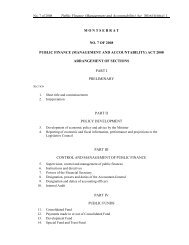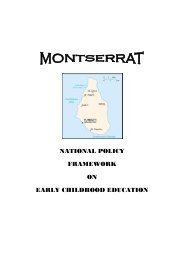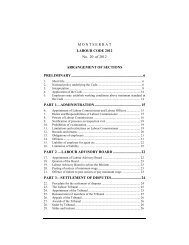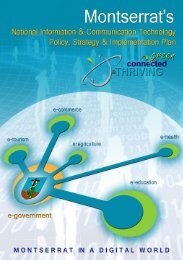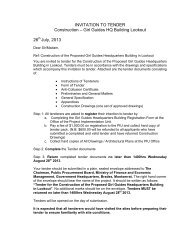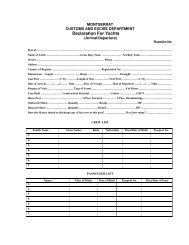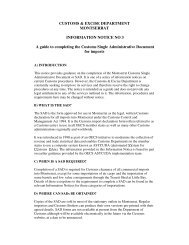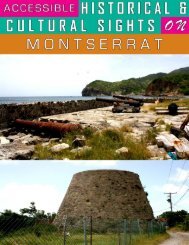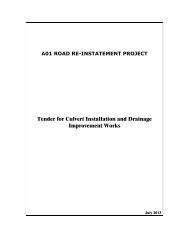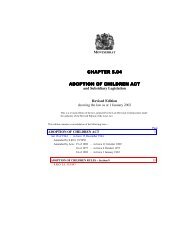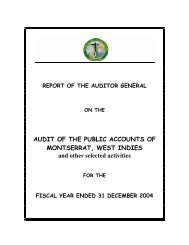Montserrat Survey of Living Conditions (MSLC) Executive Summary
Montserrat Survey of Living Conditions (MSLC) Executive Summary
Montserrat Survey of Living Conditions (MSLC) Executive Summary
You also want an ePaper? Increase the reach of your titles
YUMPU automatically turns print PDFs into web optimized ePapers that Google loves.
<strong>Montserrat</strong> <strong>Survey</strong> <strong>of</strong> <strong>Living</strong> <strong>Conditions</strong><strong>Executive</strong> <strong>Summary</strong>2.5 Education, Health and HousingEducation in <strong>Montserrat</strong> is compulsory for children between the ages <strong>of</strong> 5 and 14, and free up to the age<strong>of</strong> 17. Attendance is essentially 100% as is the transition from primary to secondary. Youth and adultliteracy is also very high.Health conditions in <strong>Montserrat</strong> are generally good:Life expectancy at birth was 81.0 years for women and 76.5 years for men with additional gainsexpected for both sexes. This compares favourably with other OECS islands.Only 1 infant death has been recorded since 1998 and none <strong>of</strong> children aged under 5 years.There were no reported cases <strong>of</strong> protein energy malnutrition.The most common recorded communicable diseases from 1998 to 2006 are respiratoryinfections (39%), influenza (33%) and gastroenteritis (14%). These diseases are prevalent invirtually every country. In contrast, there have been no cases <strong>of</strong> the communicable childhooddiseases (measles, etc.) since 1998.Only 2 cases <strong>of</strong> AIDS have been recorded on the island since 1998 although 21 persons testedpositive for HIV infection during the same period. Given that some <strong>of</strong> these left the island, theoverall rate <strong>of</strong> incidence amongst adults (15-49 years) would be substantially below theCaribbean average.The main medical concerns at present are diabetes and hypertension which respectively afflictapproximately 6% and 10% <strong>of</strong> the population; prevalence rates are not dissimilar to those in the USADiabetes along with heart disease are the main causes <strong>of</strong> death (respectively 21% and 44% <strong>of</strong> all deathsbetween 2003 and 2006) with cancers (13%) accounting for a large proportion <strong>of</strong> the remainder. Anotherhealth concern is an increasing prevalence <strong>of</strong> dementia with many elderly persons receiving psychologicalservices and with over 100 being cared for in government institutions.Housing tenure has changed considerably sincethe eruption (Figure ES4) with the proportion<strong>of</strong> households owning their property decreasingby almost half from 72% to 38% between 1991and 2001. Although there were increases inprivate renting and rent free housing, the majorincrease was in government rentedaccommodation which provided for one inevery 6 households in 2001. Currently, thesituation has improved substantially with theproportion <strong>of</strong> owned dwellings increasing to59% with a corresponding decline in the rentedsector – a reflection factors such as theconstruction <strong>of</strong> Lookout and the closure <strong>of</strong>temporary hostels.Figure ES4: Housing Tenure, 1991, 2001, 2008% <strong>of</strong> hholds80%72%70%59%60%50%43%38%40%31%30%20%20%12%10%10%7% 7%0%0%0%Owned Rented Rent Free Other1991 2001 2008/09 Housing Tenure<strong>Montserrat</strong> Country Poverty Assessment, Final ReportHalcrow Group Limited, July 2012.ES7




